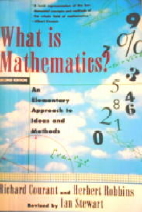A New Scientist article began with a now familiar refrain:
They call it the “unreasonable effectiveness of mathematics.” Physicist Eugene Wigner coined the phrase in the 1960s to encapsulate the curious fact that merely by manipulating numbers we can describe and predict all manner of natural phenomena with astonishing clarity…
The article by Michael Brooks has the title Is the universe conscious? It seems impossible until you do the maths.
As I expected, the primary focus of the article is Integrated Information Theory, a way to understand consciousness proposed by neuroscientist Giulio Tononi in 2004. More than one of my previous posts refers to the development of this proposal, in particular there is Where does the mind begin? posted in 2017.
Neuroscientist Giulio Tononi proposed the Integrated Information Theory of Consciousness (IIT) in 2004. IIT holds that consciousness is a fundamental, observer-independent property that can be understood as the consequence of the states of a physical system. It is described by a mathematics that relies on the interactions of a complex of neurons, in a particular state, and is defined by a measure of integrated information. Tononi proposes a way to characterize experience using a geometry that describes informational relationships. In an article co-authored with neuroscientist Christof Koch, an argument is made for opening the door to the reconsideration of a modified panpsychism, where there is only one substance from the smallest entities to human consciousness.
Brooks describes Tononi’s idea with broad strokes, saying that the theory tells us that a system’s consciousness arises from the way information moves between its subsystems.
One way to think of these subsystems is as islands, each with their own population of neurons. The islands are connected by traffic flows of information. For consciousness to appear, Tononi argued, this information flow must be complex enough to make the islands interdependent. Changing the flow of information from one island should affect the state and output of another. In principle, this lets you put a number on the degree of consciousness: you could quantify it by measuring how much an island’s output relies on information flowing from other islands. This gives a sense of how well a system integrates information, a value called “phi.”
If there is no dependence on a traffic flow between the islands, phi is zero and there is no consciousness. But if strangling or cutting off the connection makes a difference to the amount of information it integrates and outputs, then the phi of that group is above zero. The higher the phi, the more consciousness a system will display.
ITT has attracted many proponents but at the same time has come under quite a bit of critical scrutiny. The mathematics of the theory is very complex. The language of the mathematics is borrowed from information theory, and informational relationships are characterized geometrically as shapes. These shapes, Tononi says, are our experience.
Brooks points to a number of computational issues that require attention as well as the problem of “explaining why information flow gives rise to an experience such as the smell of coffee.” But proponents of the idea are committed to resolving the technical issues, and continue to have faith in the model.
Rather than abandoning a promising model, he [mathematician Johannes Kleiner] thinks we need to clarify and simplify the mathematics underlying it. That is why he and Tull [mathematician Sean Tull] set about trying to identify the necessary mathematical ingredients of IIT, splitting them into three parts. First is the set of physical systems that encode the information. Next is the various manifestations or “spaces” of conscious experience. Finally, there are basic building blocks that relate these two: the “repertoires” of cause and effect.
They posted a preprint paper in February that describes the work.
“We would be glad to contribute to the further development of IIT, but we also hope to help improve and unite various existing models,” Kleiner says. “Eventually, we may come to propose new ones.”
A philosophical difficulty with the theory, however, raises questions close to my heart. The calculations involved in IIT imply that inanimate things possess some degree of consciousness. This may be considerably difficult for many to accept, but I’m happy to report that not everyone has a problem with the possibility. From the Brooks article:
“Particles or other basic physical entities might have simple forms of consciousness that are fundamental, but complex human and animal consciousness would be constituted by or emergent from this,” says Hedda Hassel Mørch at Inland Norway University of Applied Sciences in Lillehammer.
The idea that electrons could have some form of consciousness might be hard to swallow, but panpsychists argue that it provides the only plausible approach to solving the hard problem. They reason that, rather than trying to account for consciousness in terms of non-conscious elements, we should instead ask how rudimentary forms of consciousness might come together to give rise to the complex experiences we have.
With that in mind, Mørch thinks IIT is at least a good place to start.
How does it happen? How to the cells that grow and specialize in embryonic development produce what we call the mind? I became preoccupied with questions like this when I tried to understand the degree to which lesions in the frontal lobe of my mother’s brain changed her experience (and her response to the reality that her new experience created) I began to wonder, in a new way, about the nature of the relationship between her body and her mind. Where was the person in the body? One of the things I heard over and over was “she isn’t there anymore.” And I continued to think, “of course she is.” I now find that the kinds of questions I wanted to ask are increasingly present among researchers, in both neuroscience and mathematics. I have also found that my own hunch that mathematics can shed some light on the mystery is also supported.
IIT is particularly interesting to me because it isn’t just proposing a mathematical description of consciousness, it’s actually suggesting a fundamental or natural relationship between mathematical things and experience. It doesn’t just quantify aspects of consciousness (given by the amount of integrated information), it is also aimed at specifying the quality of experience with informational relationships that are defined by geometric shapes. The points in this geometry are determined using the probability distributions for the different states that a complex of neurons may be in.
I think Tononi himself gets at the significance of this point of view when he writes this in his 2008 Provisional Manifesto:
We are by now used to considering the universe as a vast empty space that contains enormous conglomerations of mass, charge, and energy—giant bright entities (where brightness reflects energy or mass) from planets to stars to galaxies. In this view (that is, in terms of mass, charge, or energy), each of us constitutes an extremely small, dim portion of what exists—indeed, hardly more than a speck of dust.
However, if consciousness (i.e., integrated information) exists as a fundamental property, an equally valid view of the universe is this: a vast empty space that contains mostly nothing, and occasionally just specks of integrated information —mere dust, indeed—even there where the mass-charge–energy perspective reveals huge conglomerates. On the other hand, one small corner of the known universe contains a remarkable concentration of extremely bright entities (where brightness reflects high levels of integrated information), orders of magnitude brighter than anything around them. Each bright “star” is the main complex of an individual human being (and most likely, of individual animals). I argue that such a view is at least as valid as that of a universe dominated by mass, charge, and energy.
Like many of the articles about how mathematics is shedding new light on things, the New Scientist article is not highlighting the mathematics itself, nor what it has the potential to show us. As I see it, mathematics has the potential to show us how we are likely misreading our reality, by showing us how perspectives are built in the mind, or how perspectives are built with the arrangement of concepts and not just the arrangements of neurons firing. Mathematics is in a unique position to show us the bridge between the physical and the conceptual. But this recent New Scientist article still reports good news – specifically that ITT continues to attract the interest of neuroscientists and mathematicians alike.


Recent Comments